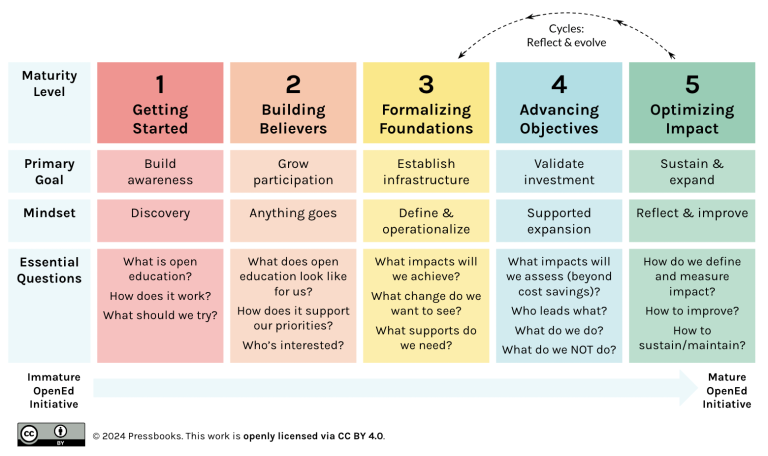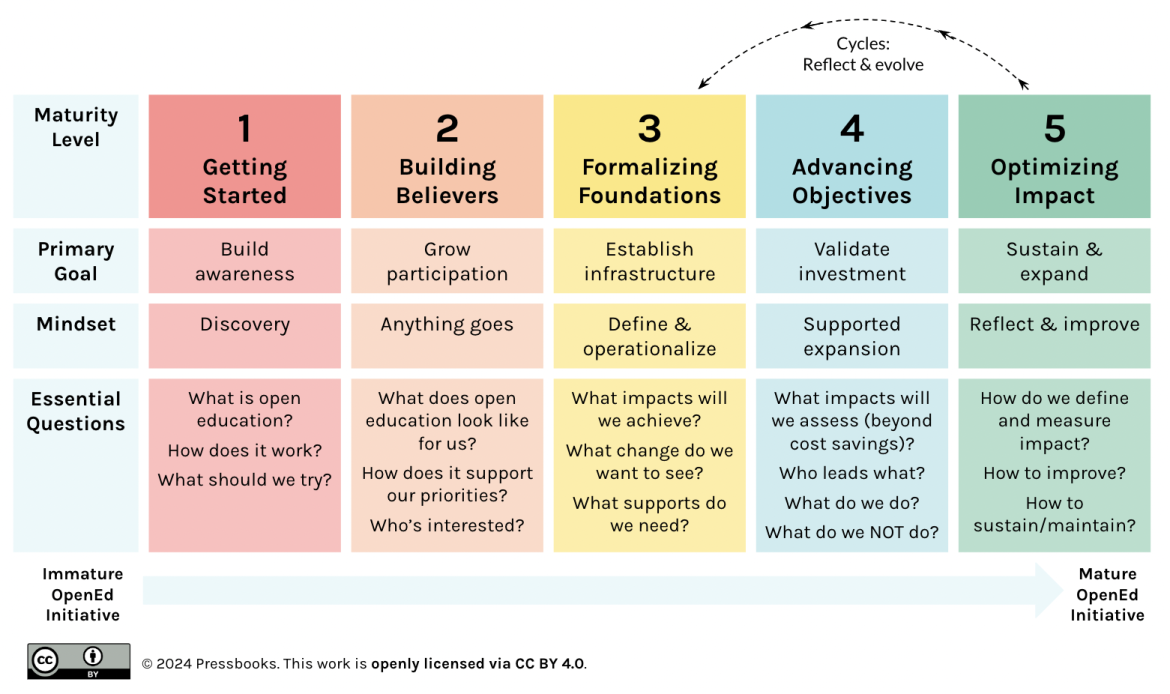One of the most exciting things about the open education movement today is also at times one of the most maddening things: it’s still growing up.
Although Wikipedia dates the origins of open education back to the open access work of John Amos Comenius (circa 1600), practically speaking this is a young, dynamic field. The term “open educational resources,” coined at a UNESCO forum in 2002, will turn just 22 this July. The Cape Town Open Education Declaration, published in 2007, is still a teenager. Within colleges and universities, the most mature open education initiatives date back about a decade (with the notable exceptions of MIT OpenCourseware turning 23 this year and The Open University, a graybeard of 55.)
Growing Up is Hard to Do
>>> Download the Open Education Reference Guide
This growing-up process is exciting, powered by passionate faculty, students, librarians, administrators, and other leaders working to move open education projects forward across their institutions, systems, and education as a whole. Things are evolving quickly as resourceful, creative people experiment with open education, innovate in teaching and learning, and anchor this work in organizational missions and strategic plans.
At the same time, growing up isn’t easy, especially amongst a cohort where the oldest members of the group are themselves still figuring things out. Trails are still being blazed for many of the objectives this community wants to achieve. Many chapters are not yet written.
Fortunately, a saving grace of the open education movement is its enduring commitment to sharing and collaboration. This community is eager to learn from each other, iterate, and give back. In that spirit, we are excited to share a product of this collective learning and collaboration from our space in the open education ecosystem.
Synthesizing Collective Wisdom
Pressbooks works with organizations at all levels of maturity in their open education initiatives. We provide support for OER publishing programs as they grow from inception to becoming substantial digital libraries of interactive books. We celebrate successes and learn, along with our institutional partners, about navigating the bumps and challenges on the open education journey.
Conversations with partners in recent months led to deeper thinking about how open education projects evolve. We see patterns in the stages of growth many organizations experience. We notice similarities in the challenges they encounter at different stages as well as the goals they are working to achieve. We also recognize a common desire for tools and resources to help open education champions glean insights from colleagues and apply them to their own planning efforts.
Synthesizing these ideas along with relevant research on maturity models, Pressbooks developed the Open Education Maturity Model as a simple planning tool to help frame conversations and strategy development for open education initiatives. After pressure-testing it with several seasoned experts (acknowledging particular thanks to Iowa State’s Abby Elder, SUNY Geneseo’s Allison Brown, Oregon State’s Stefanie Buck, and Virginia Tech’s Anita Walz) and incorporating their input, we are excited to share this tool more broadly.

What is the Open Education Maturity Model
The Open Education Maturity Model is a framework for understanding how open education initiatives develop. It’s designed to help track progress, understand impact, and guide the growth of open education initiatives. It takes into consideration the goals, mindsets, and essential questions to consider from early awareness-building through measuring and expanding sustained impact.
This planning model was developed by Pressbooks in consultation with institutional partners and informed by our work supporting hundreds of organizations engaged in open education projects. It was also informed by this prior research:
- Open Innovation Maturity Framework (Enkel et al., 2011)
Applying the Open Education Maturity Model
The Open Education Maturity Model is a tool to guide reflection and strategic planning. It is not a prescriptive roadmap. Instead, it provides a set of guiding questions and milestones that can help open education advocates organize, strategize, and localize their initiatives to fit their organizational context. It can help leaders locate their initiatives on a trajectory of growth and anticipate what’s ahead so that they can define, plan, and track the appropriate things.
Although this model builds towards “optimizing impact,” it does not prescribe the nature of that impact or what “optimizing” means. Because every organization’s context is unique, these are critically important planning questions for organizations to answer for themselves based on their own goals, stakeholders, resources, and strategic priorities. We look forward to continued dialogue and feedback about this maturity model as a planning tool and how it supports the chapters still being written in the continuing story of open education impact.
For more about this framework and advice from expert practitioners on how to get through the growing pains of open education projects, watch our webinar “Mapping Your OER Journey: Charting Progress, Navigating Challenges, and Building Impact” or download our Open Education Reference Guide.
